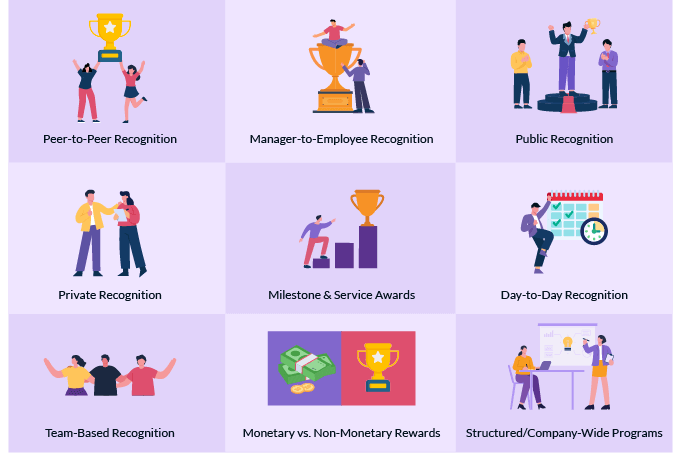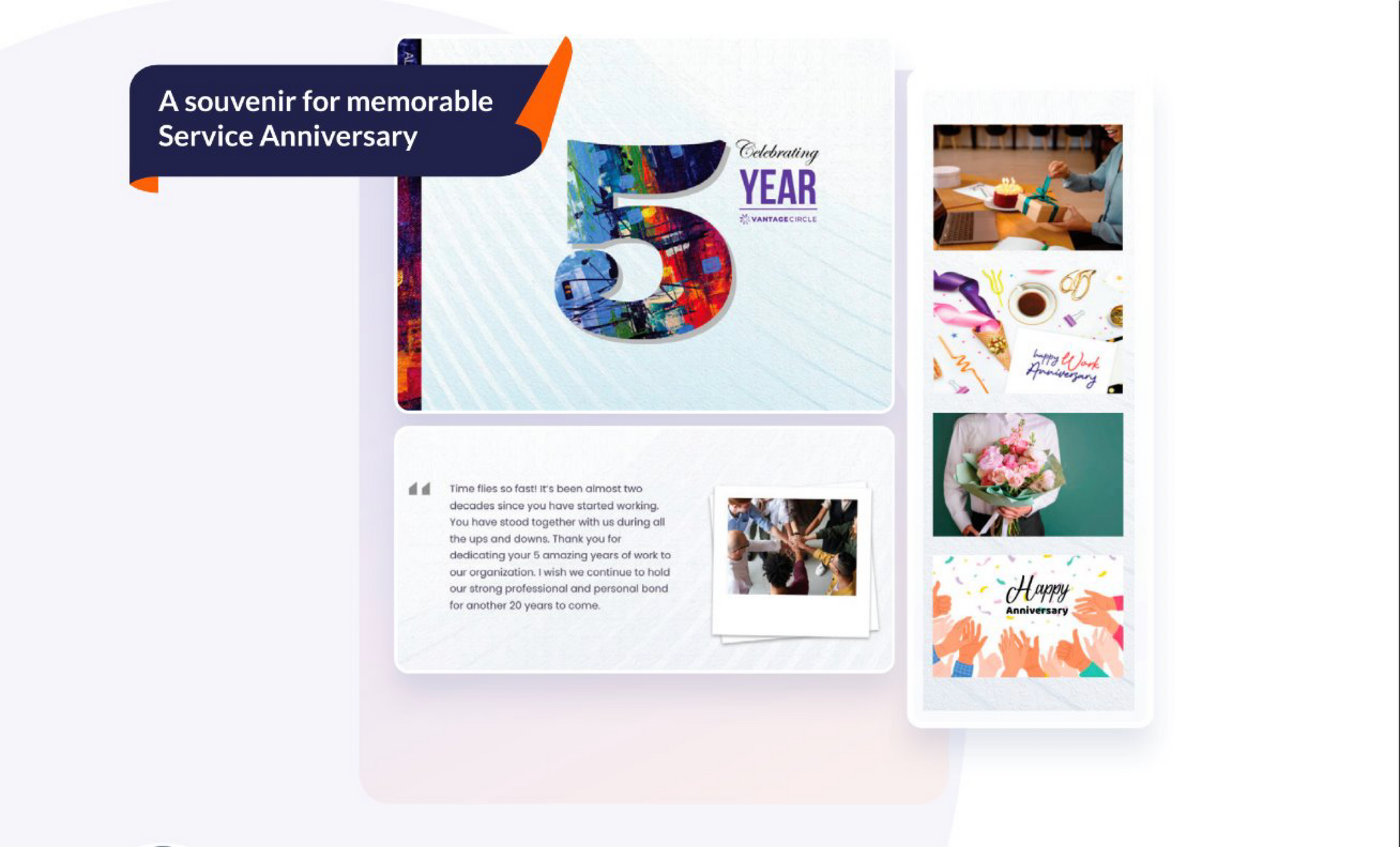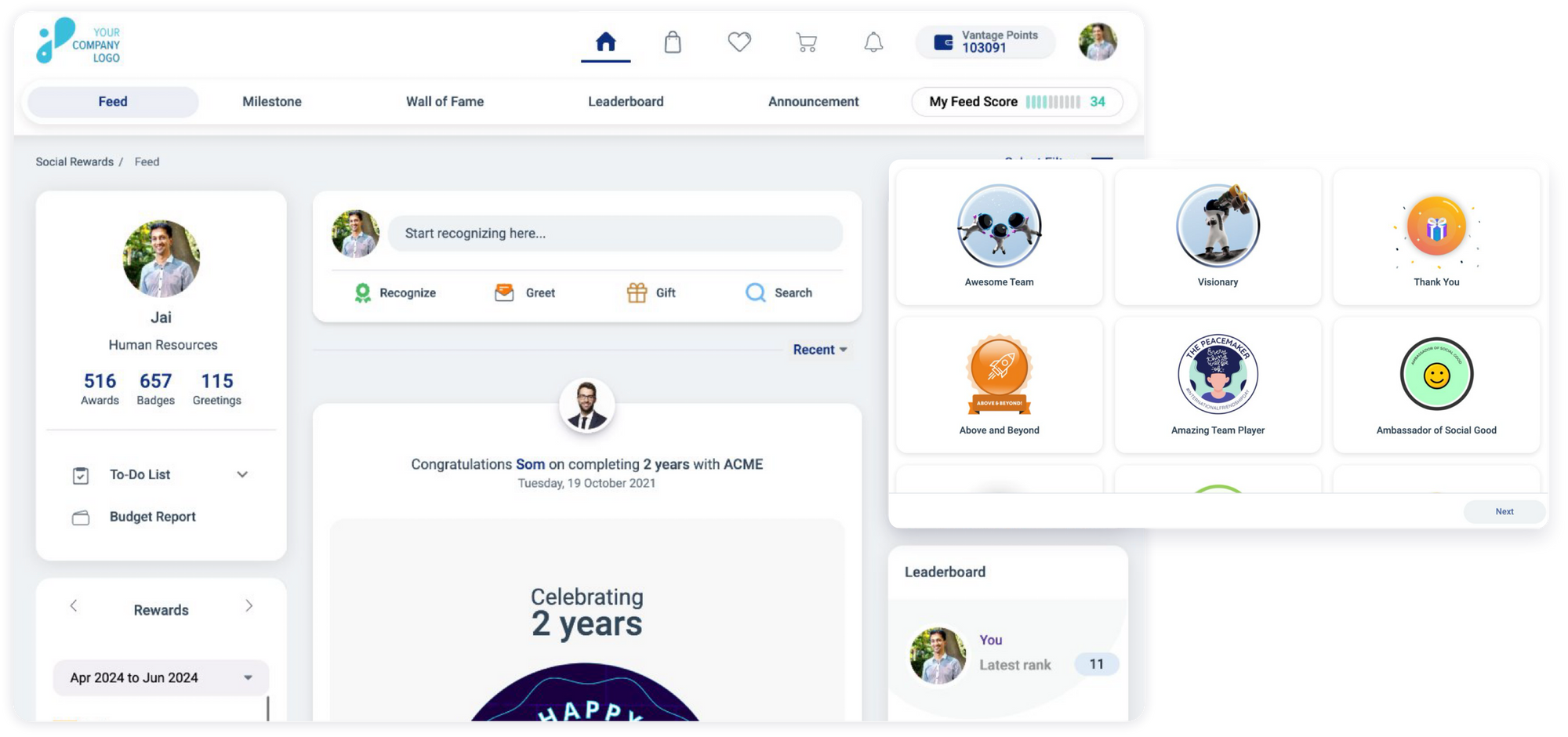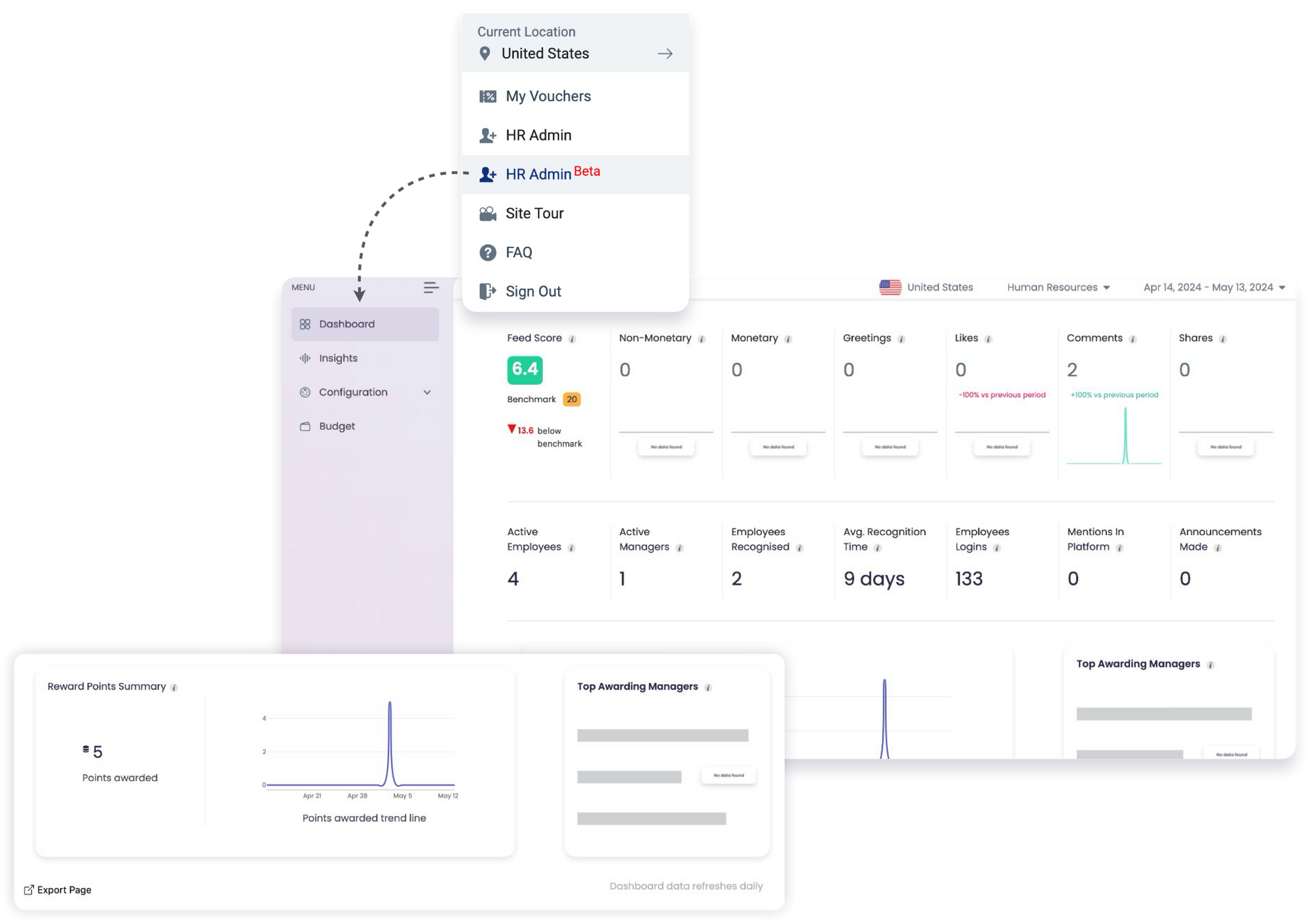Value Recognition: The Definitive Step-by-Step Guide (Types, Tools & ROI)

A Global Employee Recognition and Wellness Platform
People may take a job for more money, but they often leave it for more recognition.”
– Dr. Bob Nelson, Author of 1001 Ways to Reward Employees
He said it decades ago, and it still holds true, the only difference being that now, recognition needs to mean something deeper.
Every company has values. They're on the website, in the onboarding deck, maybe even on the office wall. But here's the gap: employees don't always see how their day-to-day work connects to those words. That disconnect quietly erodes trust, engagement, and culture.
Value Recognition closes that gap. It's the practice of tying every acknowledgment; every "thank you," every win celebrated to the behaviors and principles your organization actually stands for. It's not about generic praise. It's about making your culture visible, repeating what matters, and reinforcing it until it becomes reflex.
As hybrid work reshapes expectations and retention becomes a boardroom priority, recognition has evolved from a nice-to-have into a strategic lever.
Lets walks you through how to build a employee recognition program that works covering what types matter, the tools that scale, and the ROI that justifies the investment.
What is Value Recognition?

Value recognition is the practice of acknowledging and rewarding employees when their actions and behaviors specifically demonstrate a company's core values.
Think of it this way: performance recognition applauds someone for exceeding their sales quota. Value recognition celebrates how they achieved it through transparent client communication, collaborative problem-solving, or customer-first decision-making that showcases your organization's stated principles.
This distinction matters enormously. Research from Gallup shows that teams that receive adequate recognition experience 19% less turnover than those who feel under-recognized. When employees see their values-aligned actions acknowledged consistently then corporate principles shift from poster statements to everyday actions at work.
The Strategic Importance of Value Recognition

Far from being a feel-good initiative, value recognition is a strategic lever that directly impacts employee performance, culture, and long-term sustainability. By translating values into daily behaviors, it ensures that organizations don't just declare their principles—they live them. The ripple effect is profound: employees feel seen, teams grow stronger, and businesses gain measurable returns.
Builds Alignment Between Company Values and Daily Actions
When Recognition is tied to values, employees understand what success looks like and why it matters. This alignment turns generic mission statements into concrete, observable behaviors. For instance, rewarding "customer-first" actions reinforces client-centricity as a shared responsibility, rather than a line in the handbook.
Strengthens Employee Morale, Belonging, and Culture
Acknowledging value-driven behavior promotes belonging and reinforces culture at a workplace. That belonging instills trust and morale, especially in hybrid environments. This emotional resonance builds pride and morale, especially in diverse, hybrid, or global teams where culture can otherwise feel fragmented.
According to a new Blueboard Study, employees who feel appreciated are over four times more likely to say their coworkers are fully engaged than those who don't feel appreciated.
Connects Intrinsic Motivation with Company Objectives
Recognition is one of the most cost-effective motivators. Gartner's 2025 survey reveals a critical gap: 57% of HR leaders say managers fail to enforce the culture consistently.
Value recognition bridges this divide by connecting personal motivation directly to organizational principles. When employees' intrinsic desires align with business objectives, leaders create a system where personal fulfillment and company outcomes move in tandem. This reduces the gap between "what I want to do" and "what I am expected to do."
Improves Retention, Engagement, and ROI
The impact shows up in hard metrics, not just sentiment. Deloitte reports that companies with recognition-rich cultures see 31% lower voluntary turnover. By connecting culture to measurable impact, value recognition transforms from a soft initiative into a hard business advantage.
9 Core Types of Value Recognition (with Examples)

1. Peer-to-Peer Recognition
Example: An employee uses a company-wide Slack or Teams channel to post, "Big thank you to @Sarah for staying late to help me finish my presentation. You're a perfect example of our 'One Team' value!".
Why it's Value Recognition: The appreciation goes beyond gratitude, highlighting a behavior that reflects a key organizational value and highlighting what "living the values" looks like in action. Through platforms like Vantage Recognition, such peer-to-peer moments gain visibility across the organization, making appreciation timely, authentic, and contagious.

Source: Vantage Recognition
2. Manager-to-Employee Recognition
Example: During a one-on-one meeting, a manager says, "I was so impressed with how you handled that difficult client call. Your patience and creative problem-solving perfectly embodied our value of 'Take Ownership.'"
Why it's Value Recognition: The recognition highlights specific behavior and directly ties it to an organizational principle, showing that the company values both effort and alignment.

Source: Vantage Recognition
3. Public Recognition
Example: At a town hall meeting, a leader gives a shoutout: "This quarter's 'Value Victor' award goes to the engineering team, whose work on Project Phoenix showcased incredible 'Innovation' by cutting costs by 30%."
Why it's Value Recognition: Linking public praise to a value helps everyone see the company’s principles in action.
4. Private Recognition
Example: A team lead sends a direct message saying, "I don't want to put you on the spot publicly, but I saw how you meticulously checked the data for errors before the launch. That level of detail is exactly what we mean by our 'Commitment to Quality' value. Thank you."
Why it's Value Recognition: The message feels personal and sincere, ideal for employees who prefer quieter acknowledgment that still ties to company values.
5. Day-to-Day Recognition
Example: A colleague comments on a shared document, "This project plan is incredibly well-organized and clear. Love how you're living our value of 'Clarity and Focus.'"
Why it's Value Recognition: These are small, frequent, and informal acknowledgments that consistently emphasizes on value-driven behavior in real time, making recognition part of everyday culture.
6. Milestone & Service Awards
Example: When presenting a 5-year service award, the CEO says, "We aren't just celebrating five years with Mark. We're celebrating five years of him being a role model for our 'Integrity' value in every project he's managed."
Why it's Value Recognition: Linking service milestones with demonstrated values gives longevity a more profound meaning beyond tenure.Employee Recognition platforms like Vantage Circle offer a Service Yearbook feature, which is a personalized online yearbook. It allows peers to collect and share memories for someone’s service anniversary.

Source: Vantage Recognition
7. Team-Based Recognition
Example: An award or bonus is given to a cross-functional team with a note that reads, "To the Tiger Team: Your seamless work between marketing, sales, and product was a masterclass in 'Breaking Down Silos.' Your success is a direct result of living that value."
Why it's Value Recognition: It rewards collective behavior, showing how teamwork aligned with company values leads to success.
8. Monetary vs. Non-Monetary Rewards
Example: A salesperson receives a bonus for record-breaking sales (monetary), while a developer earns a "Culture Champion" badge for mentoring new hires (non-monetary).
Why it's Value Recognition: Both reward actions are tied to values, but non-monetary recognition often carries emotional weight and cultural reinforcement which works beyond financial incentives.
9. Structured/Company-Wide Programs
Example: A company launches a recognition platform where employees can nominate peers for quarterly "Living Our Values" or monthly "Kudos" awards, celebrating individuals who best demonstrate core behaviors like collaboration, innovation, or customer focus.
Why it's Value Recognition: It institutionalizes employee appreciation, ensuring Recognition is consistent and transparent across all departments and levels. It encourages everyone to think about and articulate the specific company value behind the action they are praising, making it an essential part of the company's daily operations.

Source: Vantage Recognition
How to Implement a Value Recognition Program in 5 Steps

Recognition programs don't succeed simply because they exist; they thrive when they are purposefully designed, visible, and lived every day. Implementing one requires more than HR forms or annual awards; it's about embedding values into everyday work experience. Here's a step-by-step approach that works:
Step 1: Clearly Define and Communicate Your Core Values
Values are more than words on a website or posters in the lobby. They must be tangible and actionable. Employees should instantly understand what "Integrity" or "Customer First" looks like in their daily workflow. Leaders can bring values to life through storytelling, case studies, and frequent references in meetings, ensuring that every employee knows what behaviors matter most.
Step 2: Link Specific, Observable Behaviors to Each Value
Broad statements alone don't drive action. Define behaviors that demonstrate each value so Recognition is grounded, fair, and repeatable. For example, "Collaboration" might mean actively helping a teammate meet a deadline, while "Innovation" could be proposing a workflow improvement that saves time or cost. When Recognition is tied to concrete actions, employees know exactly what to aim for.
Step 3: Choose Tools That Empower Peer Recognition & Visibility
Technology plays a key role in driving adoption. The right platforms, that integrate with everyday communication tools like Slack, Microsoft Teams, or internal collaboration systems make it easy for employees to recognize peers in real time, without disrupting their workflow. This seamless experience boosts participation and ensures that recognition is visible and celebrated across the organization.
Step 4: Create a Ripple Effect with Public Rituals
Recognition gains impact when it's not just private or one-off. Rituals such as "Value Champion of the Week," shoutouts in team meetings, or monthly town hall awards create visibility, normalize value-driven behavior, and inspire others to emulate it. These public moments send a powerful message: the company doesn't just talk about values, it celebrates them.
Step 5: Secure Leadership Buy-In and Active Participation
Culture flows top down. If leaders don't actively participate, recognition programs risk being seen as superficial. Leaders should model Recognition consistently, celebrating employees who exemplify company values and reinforcing the behaviors they want to see. Their involvement lends credibility, motivates managers, and signals that Recognition is a strategic, not cosmetic, initiative.
Common Pitfalls in Value Recognition (and How to Fix Them)
Even the best recognition programs can fail if they're not designed carefully. Here are three common traps and how to avoid them:
Inconsistency & Bias
When Recognition depends on individual managers, it can feel uneven or even unfair. Some employees get noticed often, while others are overlooked.
Fix: Set clear criteria for what deserves Recognition and train managers to apply it fairly.
Losing Momentum
Many programs start strong but fade after the initial excitement. Without rhythm, Recognition slips back into the background.
Fix: Build rituals like weekly shoutouts or monthly awards and use automated reminders to keep Recognition alive.
Issues with Remote & Hybrid Teams
Out of sight shouldn't mean out of mind. Remote employees often miss out on Recognition simply because they're not in the room.
Fix: Use digital-first tools with async visibility, so Recognition flows seamlessly across locations and time zones.

Source: Vantage Recognition
How a Platform Amplifies Your Value Recognition Strategy
Platforms are the backbone for scaling Recognition:
Centralize and Simplify: A Recognition platform helps bringing in all recognition data in one place. With the help of a centralized system you can create a single source of truth, where every acknowledgment whether peer-to-peer or leadership-driven is easily visible, trackable, and celebrated. This avoids duplication and ensures no contribution goes unnoticed.
Make Recognition Effortless: Integrations with Slack, MS Teams, or email ensure frictionless acknowledgment. Such systems allow Recognition to flow naturally, with just a few clicks, without interfering with workflow.

Source: Vantage Circle
Gain Insights with Analytics: Track adoption, value alignment, and ROI. Analytics can reveal which values are thriving, which teams are most engaged, and how Recognition links to retention, engagement, or customer satisfaction. Leaders gain a real-time dashboard of their culture's health, rather than relying on annual employee surveys.
Connect Recognition to Rewards: Points, perks, or bonuses to reinforce behaviors in tangible ways. The right mix strengthens motivation across a diverse workforce.
This is where a solution like Vantage Circle's Vantage Recognition platform becomes invaluable. It not only integrates Recognition seamlessly into daily tools like Slack and MS Teams but also ties it directly to company values, provides analytics for ROI measurement, and connects Recognition to a flexible global rewards catalog. In other words, it operationalizes, scales, and futurizes the cultural principles outlined above.
Recommended Resource: How to Recognize Employees with Microsoft Teams?
Value Recognition FAQs
Q: What's the difference between value recognition and performance-based Recognition?
Performance recognition celebrates outcomes; value recognition celebrates the behaviors behind those outcomes. Both are complementary.
Q: How can you measure the success of a value recognition program?
Metrics include adoption, extent of participation, value alignment, retention, engagement, and even business KPIs such as productivity or customer satisfaction.


















